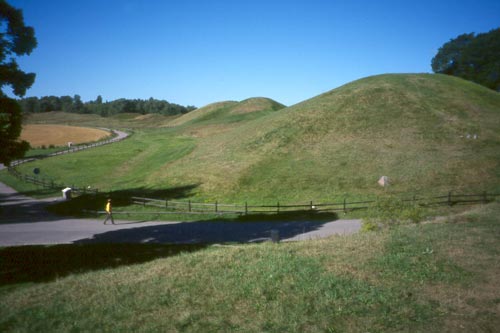
The three great grave mounds at Gamla Uppsala.
About 300 small mounds and boat graves are here too.
Gamla Uppsala is just north of Uppsala, the fourth largest city in Sweden.
ACROSS SWEDEN AND BACK TO DENMARK
The ferry ride from the Ålands took only two hours, and I stuffed myself in the breakfast buffet while trying not to get seasick from the rolling ship. The weather was awful outside—cold rain and wind lashed the windows. Onshore at Grisslehamn, I wrapped myself up in raingear and splashed out of town toward the university town of Uppsala. The weather did improve and I visited the old church at Gamla Uppsala, said to be on the site of a major pagan temple. Nearby grave mounds (three were huge) dated as far back as A.D. 600; some had cremated remains in stone cysts. In town I stepped into the magnificent cathedral, which took 175 years to build before consecration in 1435. Then on to a tour of the imposing castle, started in the 1540s and best known for the historic events of the Vasa Dynasty that took place here early in Sweden's history.
If I'd continued due west I would have come to Oslo, but there wasn't enough time for Norway, so I turned southwest toward Sweden's Bohuslän coast. Central Sweden holds four enormous lakes, all connected to the sea by canals. In fact you can take a canal cruise all the way across the country via the lakes! I chose to bicycle, of course, but did get to see the four lakes and a couple of the canal boats. Other attractions along the way included the 14th-century Harkeberga church with outstanding late medieval paintings, a folk-music festival near Eskiltuna, a massive 19th-century fort in Karlsborg, and the Saab Museum in Trollhättan. As you no doubt know, Svenska Aeroplan Akti Bolaget cars are assembled by trolls here. The first models in the late 1940s and early 1950s looked terribly homely and were powered by little two-cylinder, two-cycle engines.
I hit the biggest hills of the trip on the climbs out of the Göta älv river valley below Trollhättan, then made a fast descent to the deeply indented Bohuslän coast. Three high bridges got me to Tjorn Island and I continued 25 km to Klädesholmen village on two small islands. Houses perched on the bare rock, and fishing boats crowded the little harbors—all very picturesque in the sunshine. I watched the shrimp, fish, and jellyfish swim in the crystal-clear water.
I had to retrace the 25 km and three bridges back to the mainland before I could continue south to Gothenburg—Sweden's most important industrial and commercial city—on the Göta älv. Many people were out campaigning for or against the country's adoption of the Euro. (The referendum on Sept. 14th produced a 64% NO vote, so the Swedes will continue using the krona.) I enjoyed strolls among the old buildings and parks in the central area and visits to museums. The Radio Museum had early crystal models that required skill to tune in stations, deluxe shortwave sets in beautiful wood cabinets, ham radios (many home built), maritime transmitters, and military sets—there was a lot to see for us technophiles! Gothenburg claims to have the world's largest collection of floating museum ships, with modest vessels such as a 1938 freighter and complex ships such as the submarine and destroyer; I spent most of a day wandering the decks and passageways of these ships. On my last day in town, I cycled downriver to the Volvo Museum and a look at the first and latest models. In 1927 you had a choice of a sporty open tourer car or the more practical enclosed version; you could cruise at 60 km/h (37 miles/h) with either model!
Riding south along the coast, I climbed up to the Varberg Castle for views of the sea and town; the castle museum had fine exhibits on history and art; one model showed how brave peasants stormed the castle in a local revolt—they climbed up a rope through the overhanging toilet! Bessie Too and I continued south along sandy beaches and farmlands, sped past a couple of Swedish castles, and reached the Öresund coast at Helsingborg. We had come full circle around southern Sweden since our last visit to the city almost three months ago! I rolled onto a large ferry and 25 minutes later was back in Denmark.
Denmark and Home
The last days in Denmark passed enjoyably visiting old friends
Preben and Margaret. Besides taking in Margaret's flavorful cooking, we went on
walks in Helsingør and Copenhagen to soak in the atmosphere and history. An early
morning train ride took me directly from Helsingør to Copenhagen’s airport
and the British Airways flights back to the USA. Big red Rapid Transit tags on my
luggage helped make the connections in Heathrow.
Alas, the long bicycle ride across Europe's northland and back has ended. The days were packed with scenic beauty, picturesque towns, lively cities, and lots of seascapes along with some friendly people met on the way. It has been a great trip.

The three great grave mounds at Gamla Uppsala.
About 300 small mounds and boat
graves are here too.
Gamla Uppsala is just north of Uppsala, the fourth largest
city in Sweden.
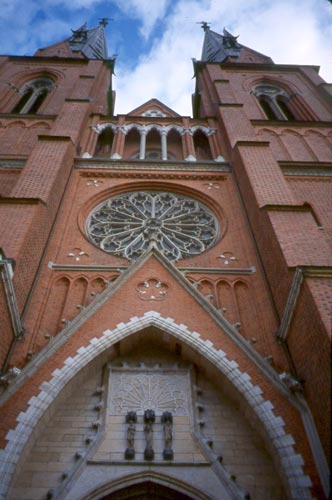
Uppsala Cathedral
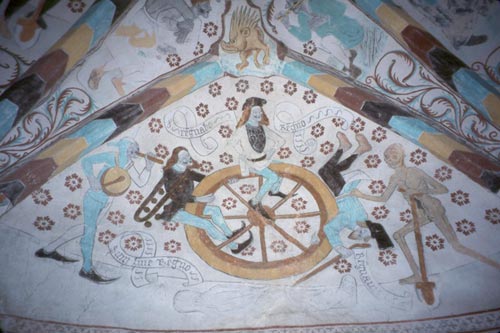
Wheel of Life in the 14th-century Härkeberga Kyrka
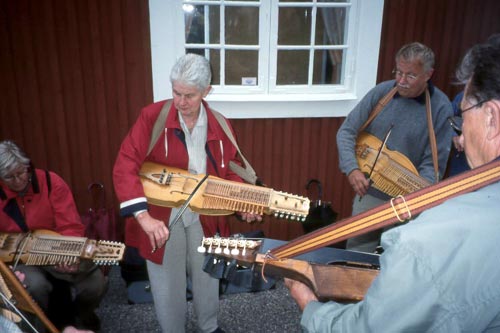
A nyckelharpa jam session at a folk festival in the village of Fogdö.
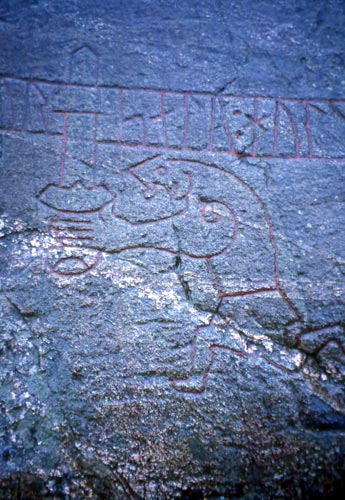
Detail
of Sigurdsristningen rock carving made ca. 1000
It illustrates a legend about
the hero Sigurd (shown here) who kills a huge snake.
The runes in the snake's
body tell of Sigrid who sponsored a nearby bridge as a memorial for her husband.
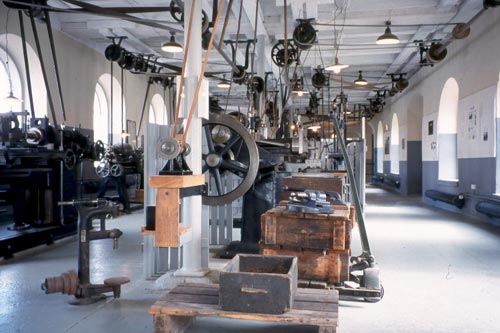
Machinery hall (1910s) in Faktorimuseet, Eskilstuna.
The town has a long industrial
heritage.
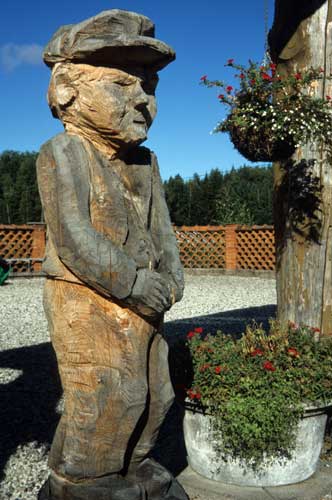
Folk
figure southwest of Eskilstuna
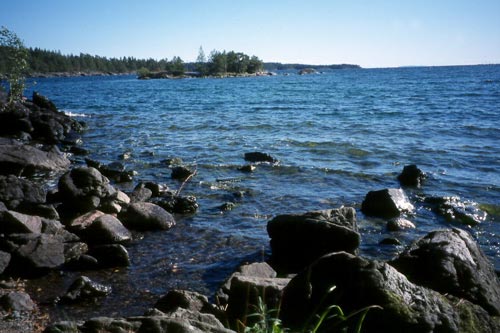
Lake
Vättern
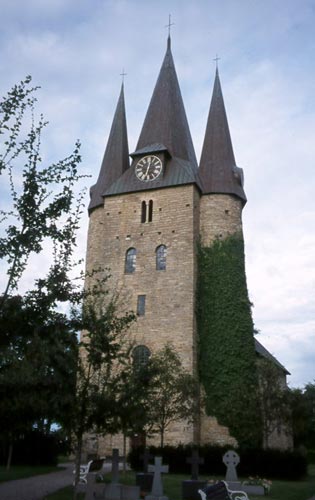
Husaby Kyrka
The region converted to Christianity when
King Olof Skötkonung was
baptized by the English
missionary Sigfrid in 1008, an event said to
have taken place at nearby
Sigfrid's Well.
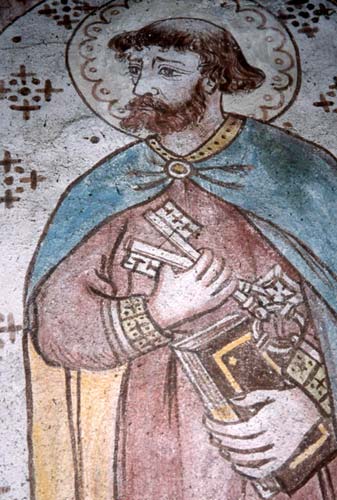
St. Peter in Husaby Kyrka
The lime murals date to
the 15th century.
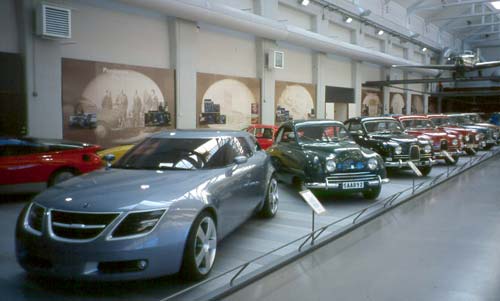
Saab Car Museum in Trollhättan. The Saab aircraft dates
from the late 1940s.
Video exhibits in adjacent rooms are great fun.
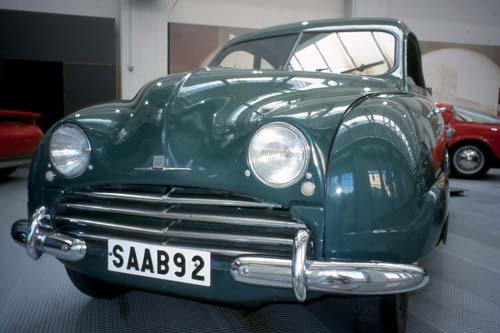
The first Saab production car—the model 92—rolled out of the factory in
early 1950.
A smoke-belching two-stroke, two-cylinder engine had 764cc and
developed 25
bhp; it was transversely mounted and drove the front wheels. The three-speed transmission
incorporated a free-wheeling feature.
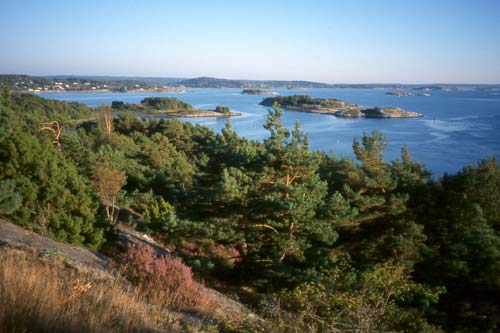
The Bohuslän Coast: A series of bridges and
islands took me far out in the sea.
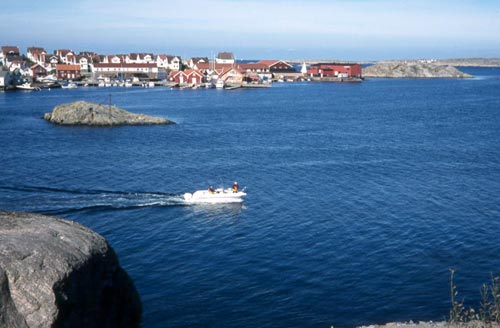
The picturesque fishing village of Klädesholmen on the Bohuslän
Coast

A
jellyfish cruises along the shore at Klädesholmen.
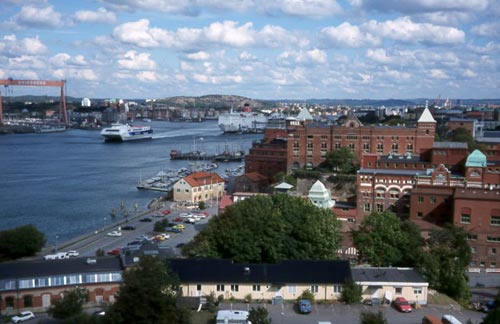
A high-speed ferry departs Gothenburg.

A 1927 Volvo ÖV4, one of the company's first models,
at the
Volvo Museum, Gothenburg

Rotary torpedo loader in the 69-meter-long sub Nordkaparen
at Göteborgs
Maritima Centrum in Gothenburg

Wild
rose and rose hips on the west coast of Sweden
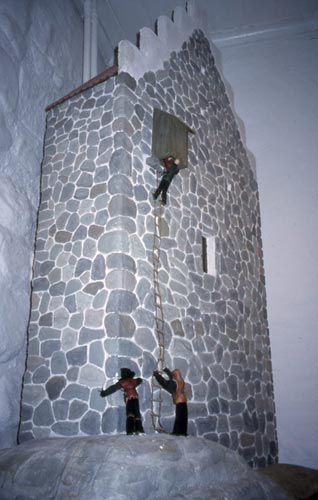
This model in the Varberg Museum shows how peasants
invaded the castle through
the toilet during a local uprising
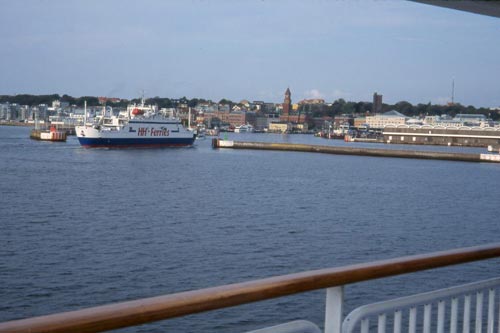
Helsingborg recedes into the distance as we ferry across to Denmark.